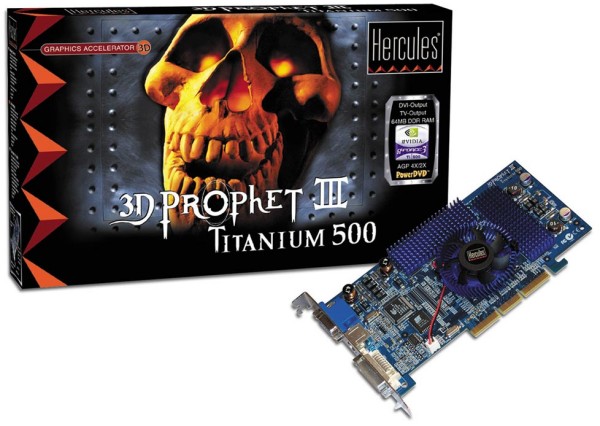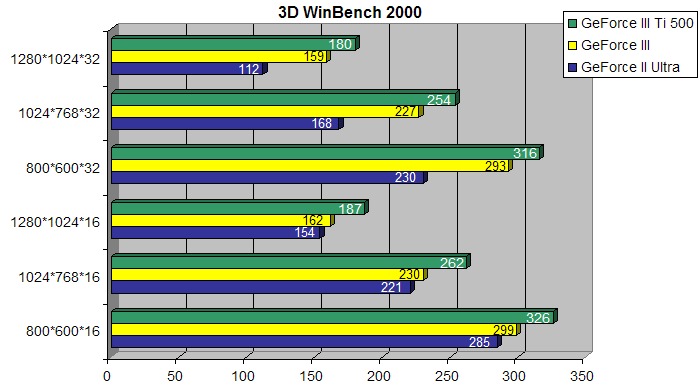
 |

|
| ActiveWin: Reviews | Active Network | New Reviews | Old Reviews | Interviews |Mailing List | Forums |
|
|
|
|
|
DirectX |
|
ActiveMac |
|
Downloads |
|
Forums |
|
Interviews |
|
News |
|
MS Games & Hardware |
|
Reviews |
|
Support Center |
|
Windows 2000 |
|
Windows Me |
|
Windows Server 2003 |
|
Windows Vista |
|
Windows XP |
|
|
|
|
|
|
|
News Centers |
|
Windows/Microsoft |
|
DVD |
|
Apple/Mac |
|
Xbox |
|
News Search |
|
|
|
|
|
|
|
ActiveXBox |
|
Xbox News |
|
Box Shots |
|
Inside The Xbox |
|
Released Titles |
|
Announced Titles |
|
Screenshots/Videos |
|
History Of The Xbox |
|
Links |
|
Forum |
|
FAQ |
|
|
|
|
|
|
|
Windows XP |
|
Introduction |
|
System Requirements |
|
Home Features |
|
Pro Features |
|
Upgrade Checklists |
|
History |
|
FAQ |
|
Links |
|
TopTechTips |
|
|
|
|
|
|
|
FAQ's |
|
Windows Vista |
|
Windows 98/98 SE |
|
Windows 2000 |
|
Windows Me |
|
Windows Server 2002 |
|
Windows "Whistler" XP |
|
Windows CE |
|
Internet Explorer 6 |
|
Internet Explorer 5 |
|
Xbox |
|
Xbox 360 |
|
DirectX |
|
DVD's |
|
|
|
|
|
|
|
TopTechTips |
|
Registry Tips |
|
Windows 95/98 |
|
Windows 2000 |
|
Internet Explorer 5 |
|
Program Tips |
|
Easter Eggs |
|
Hardware |
|
DVD |
|
|
|
|
|
|
|
ActiveDVD |
|
DVD News |
|
DVD Forum |
|
Glossary |
|
Tips |
|
Articles |
|
Reviews |
|
News Archive |
|
Links |
|
Drivers |
|
|
|
|
|
|
|
Latest Reviews |
|
Xbox/Games |
|
Fallout 3 |
|
|
|
Applications |
|
Windows Server 2008 R2 |
|
Windows 7 |
|
|
|
Hardware |
|
iPod Touch 32GB |
|
|
|
|
|
|
|
Latest Interviews |
|
Steve Ballmer |
|
Jim Allchin |
|
|
|
|
|
|
|
Site News/Info |
|
About This Site |
|
Affiliates |
|
Contact Us |
|
Default Home Page |
|
Link To Us |
|
Links |
|
News Archive |
|
Site Search |
|
Awards |
|
|
|
|
|
|
|
Credits |


|
Product: 3D Prophet III Titanium 500 |
BenchMarks
|
Table Of Contents |
Now it is time to see how the GeForce 3 Ti 500 performs in comparison to the GeForce 3! Here is the detailed configuration of the PC we used to benchmark the Hercules 3D Prophet III Titanium 500:
-
Intel D850MD Motherboard (with latest P05 bios),
-
Pentium 4 2.0GHz A
-
256MB of PC800 Rambus memory
-
Maxtor 30GB UDMA 100 (7200 rpm)
-
Sound Blaster Audigy Platinum
-
Pioneer UDMA 66 DVD-106
-
Microsoft Office Keyboard & Microsoft Trackball Optical
-
Windows 2000 SP2 with DirectX 8.1
For the testing we made sure that no programs were running and did a clean Windows Boot by formatting the hard drive. By doing so we’re making sure that performance would remain unaffected. We used NVIDIA latest 23.11 drivers to perform those benchmarks along with a Hercules 3D Prophet II Ultra, Hercules 3D Prophet III & Hercules 3D Prophet III Titanium 500 cards.
The first test is obviously the unavoidable 3D Mark 2001. 3D Mark 2001 is designed for DirectX(R) 8. Using Remedy Entertainment's acclaimed MAX-FX Technology (TM), 3D Mark 2001 demonstrates how to maximize 3D gaming performance by using real-gaming technology to test a system's true game performance abilities. Below are three series of 3D Mark 2001 tests with various resolutions and various levels of FSAA enabled.

This first test clearly higlight the high performance the GeForce 3 Ti 500 can perform. At 800*600*16 the 3D Prophet III Titanium 500 is 43% faster than the 3D Prophet II Ultra. For the first time ever our 3D Mark 2001 shown a result of 9019 3D Marks for a graphics adapted! The real gap between the GeForce II Ultra and the GeForce 3 Ti 500 takes place in high resolutions: in 1280*1024 (32 bits) the latest high end GPU from NVIDIA is 75% faster than the GeForce II Ultra. The performance's gain is obviously tighter between the GeForce 3 and the GeForce 3 Ti 500: generally we observe a performance increase of 15%.

Running 3D Mark 2001 benchmarks using Full Screen Anti-Aliasing reveals the real power of a GPU, since this mode intensively uses the GPU. It's no surprise to see the 3D Prophet III Titanium 500 leaves the 3D Prophet II Ultra in the dust. Hard core gamers will see the GeForce 3 Ti 500 offers an appreciable gain of performance of 14% over the GeForce 3.

The FSAA 4x is the most demanding Anti-aliasing mode. It litterally kneels down every GPU. At the point that none of our GeForce were able to run the FSAA 4x test in 1280*1024*32. Here the results are perfectly logical: the GeForce 3 Ti 500 heads the competition while the GeForce II Ultra is widely defeated. In 1024*768*32 FSAA 4x the result we get with a GeForce 3 Ti 500 is two times better than with the GeForce II Ultra. The performance increase over the GeForce 3 turns around 15%.
Now is a great classic: the Quake III Arena benchmark. Quake III is an OpenGL game that intensively uses the GPU as well as the CPU of the computer. The results below speak for themselves!

As you can see with Quake III Arena, in low resolutions, the GeForce 3 Ti 500, GeForce 3 and GeForce II Ultra deliver almost the same level of performance. As seen before the gap between those GPUs begin to increase as soon as you increase the resolutions. It means the GeForce 3 Ti 500 is designed to provide the best performance in the highest resolutions. In 1280*1024*32 the GeForce 3 Ti 500 gives a framerate that is 75% better than the one you can achieve with a GeForce II Ultra. In comparison to the GeForce 3, the GeForce 3 Ti 500 is 15% stronger.

This time Quake III Arena was running with the FSAA 2x enabled. The results are quite eloquent! The GeForce 2 Ultra is far, far behind the GeForce 3 and GeForce 3 Ti 500. As usual the GeForce 3 Ti 500 is 15% faster than the GeForce 3.

As stated before the FSAA 4x is the most glutton anti-aliasing mode. Thus the frame rate we get in high resolution with Quake III Arena is quite weak. However the GeForce 3 Ti 500 stays on track since its results are 15% better than its predecessor. In this test the GeForce II Ultra is under heavy demand and doesn't manage to equal its successors.

As explained before, the GeForce 3 & GeForce 3 Ti 500 are the first GPUs to ever feature a new anti-aliasing mode: the Quicunx technology. In this benchmark the GeForce 3 Ti 500 is quite aggressive. Since the GeForce II Ultra doesn't support this mode, its results are not in the graph. Despite a blur effect, the Quicunx feature gives results that are between the FSSA 2x and FSAA 4x, making it and interesting compromise. The results of the GeForce 3 Ti 500 are 16% better than those of the GeForce 3.
Our last series of tests was done using Ziff Davis 3D WinBench 2000. 3D WinBench measures the performance of a PC's 3D subsystem, which includes the Direct3D software, the monitor, the graphics adapter, the graphics driver, and the bus used to carry information between the graphics adapter and the processor subsystem. 3D WinBench 2000 uses the DirectX 7.0 interface, which means you get to see the benefits and the performance of such features as hardware transformation and lighting up close and personal. Below are the results:

The results aren't surprising. Once again this graph clearly shows the GeForce 3 Ti 500 delivers ultimate performance in high resolutions. To not depart from the rule, the GeForce 3 Ti 500 is, according to 3D WinBench, 15% faster than the GeForce 3.
Benchmarks Analysis
As you can see, all the benchmarks we ran shows the GeForce 3 Ti 500 is 1.5x more powerful than the GeForce 3. Thanks to the Detonator XP and its bunch of optimizations the GeForce 3 Ti 500 GPU remarkably beats the GeForce 3 and GeForce II Ultra.g it. The tests have shown that the 3D Prophet III Titanium 500 reveals all its power when using games in high resolution like 1280x1024x32bits (or higher) with HRAA enabled. In that case the 3D Prophet III Titanium 500 totally surpasses and outperforms the GeForce 3 & the GeForce II Ultra: visual quality is definitely one step over the GeForce 2 Ultra while speed in high resolutions has been widely improved over the GeForce 3. If the vertex shaders support is an awesome enhancement that makes the GPU almost malleable so it can adapt itself to developers’ fantasies, there’s actually few application that supports it, so it’s somewhat useless for the moment. But hopefully, vertex shaders will be massively used in the near future. The Hercules 3D Prophet III Titanium 500 is indisputably the king of the hill in terms of 3D performance.



